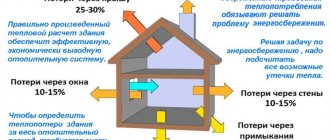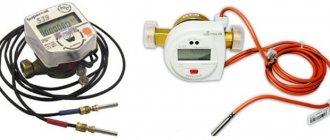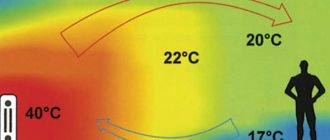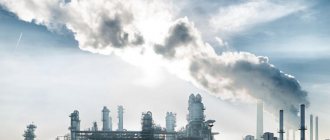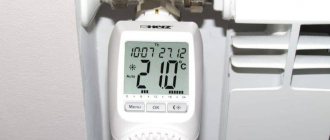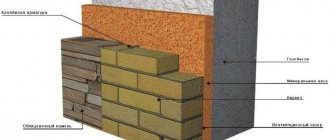Calculation of gas caloric content is required, as usual, by owners of houses and cottages for settlements with gas contractors. Blue fuel in this case is used to maintain heat in the room and heat water, and these utilities are valued in Gcal.
You will need
- Gas meter, gas calorimeter, gas consumption standard.
Instructions
1. Take readings from the gas meter. Record the data obtained about the cubic meters used. In order to find out how much energy you consumed, you need to multiply the readings taken by the calorie content of the fuel. Natural gas is a mixture of propane, butane and other compounds. Consequently, in different regions the specific heat of combustion of its cubic meter can vary from 7.6 thousand to 9.5 thousand kcal. According to the order of the Federal Tariff Service, a value of 7900 kcal is applied for gas produced by Gazprom. For wholesale purchases, recalculation is provided for deviations from the norm. 2. Convert the calories received into larger units. Gigacalories are 10 to the ninth power of calories. Or one followed by nine zeros. If you consumed 1000 cubic meters, then, considering the permissible fluctuations in the calorie content of gas, you should get from 7.6 to 9.5 Gcal. But such significant consumption is not typical for residential buildings with individual boilers. Accordingly, the owner of the cottage will pay only for some part of the gigacalorie. 3. Use a gas calorimeter to accurately determine the energy content of blue fuel. It is smart to do this with huge volumes of consumption. Manufacturers of such devices are oriented earlier than anyone at large enterprises in the field of energy, ferrous metallurgy, oil production, oil refining, etc. It is required not only for calculations, but also for optimizing the gas-air ratio in heating burners and for controlling huge gas flows. 4. Make an approximate calculation of gas calories consumed in the absence of an appropriate meter. In this case, you are charged according to the standard, which represents the volume of fuel established for different types of consumption. Multiply its value by the average calorie value of 7900 kcal/m3. Get the number of energy applied.
Gas is a source of heat, the installation of which can spoil anyone’s nerves. But subsequent maintenance of gas heating costs mere pennies.
Instructions
1. Gasification of any home should begin by contacting the gas committee in order to obtain technical data for design. We submit there the corresponding application, Taxpayer Identification Number, BTI registration certificate for building a house and our passport details. You will have to wait from 2 weeks to a month. 2. We contact the design organization with the technical conditions, having familiarized ourselves with the cost and license in advance. An organization has been selected, and a designer goes to the site to take measurements. We discuss with him the brand of equipment to be installed and the placement of gas appliances at the site. The designer agrees on the plan with Gorgaz, and this takes another 15 days. 3. After that, we select an installation organization. We sign the contract, not forgetting to stipulate all the terms. The same organization is handing over this section of the gas pipeline to Gorgaz for operation. The acceptance period can take up to a month. A positive decision obliges the client to pay for technical supervision. When the work is completed, the contractor prepares all the documents and delivers them to the Gorgaz attorney, where these papers will be stored. 4. No later than 21 days after the package of documents is transferred to Gorgaz, the gas service seals the meter and enters into an agreement with the client under which gas will be supplied to the facility. Of course, the client is offered to complete a small safety training course. Then the client pays for the connection to the main gas pipeline, carried out by the relevant service. 5. After all these operations, the client should call the gas service so that it opens the gas valve, releases gas to the facility, and also checks the equipment for the presence of losses and starts the devices. 6. Your suffering is about to end. All that remains is to invite an attorney from the service organization with which you need to conclude an agreement. This agreement will ensure the commissioning of your gas equipment. This action must be performed if you want to preserve the warranty. Video on the topic
A calorie is one of the units by which energy or work is measured. On the contrary, in order to heat water weighing 1 gram to a temperature of 1 Kelvin, you will need 1 Calorie (1 Cal). Converting calories is pretty easy.
Instructions
1. To begin with, it is worth realizing to which area of current science this or that “calorie” belongs. Despite the fact that they now mainly measure the energy value of foods, the following “types” of “calories” are somewhat common: International calorie, thermochemical calorie, and also calorie measured at 15 degrees Celsius. 2. Having figured out what kind of calories presented in one case or another, you can use the conversion table from Calories to Joules: 1 cal = 4.186 J (1 J ? 0.2388459 cal) International calorie; 1 cal = 4.184 J (1 J = 0.23901 cal) Thermochemical calorie; 1 cal = 4.185 J (1 J = 0.23890 cal15) Calorie at 15 °C Video on the topic
Note! As usual, for various types of products purchased in stores, it is indicated how many kilocalories (KCal) are contained in 100 grams of this product. The conversion of kilocalories to kilojoules is also given here. It is also worth noting that in the energy sector, when measuring the power of stations, gigacalories (GCal) are often used.
A calorie is a non-systemic unit of measurement, the derivatives of which are used, in particular, to measure the number of heat. For example, when determining the power of heating equipment, calculating the costs of utilities for the supply of hot water, etc. gigacalories are used. The SI system uses the watt and its derivatives to measure “thermal power.” There is an indicator for converting kilowatts into gigacalories.
Instructions
1. Use the ratio 100 kW = 0.0859845 Gcal when converting power measured in kilowatts per hour to power expressed in gigacalories per hour. The inverse relationship also follows from this correspondence: 1 kcal = 0.001163 kW. 2. Use any calculator for a utilitarian conversion of quantities measured in kilowatts into their corresponding value in gigacalories. For example, one of the options of the calculator included in the Windows OS is the conversion of units of measurement. You can access this calculator through the main menu of the operating system. Press the WIN key or click the Start button to open the menu. After that, go to the “All Programs” section and open the “Typical” subsection - the “Calculator” line is located there, which you need to click. You can do without the Start button and navigating the menu - press the WIN + R key combination, then type the calc command and press Enter. 3. Activate the calculator options related to the reformation of values. To do this, expand the “View” section in the menu and select the “Translation of values” line. Additional options will be placed in the left panel of the changed calculator interface. 4. Expand the “Category” list and select the “Energy” line in it. In the “Initial Value” drop-down list below, click the “kilowatt-hour” line. In the third list (“Final value”), select “kilocalorie”. There are no gigacalories in these lists, so you will have to perform an additional operation with the resulting result. 5. Click the calculator input field and enter the value in kilowatts that you want to convert to gigacalories. After that, click the “Convert” button and the calculator will show the value in kilocalories. To convert it to gigacalories, divide the value by a million - click the slash button, enter 1,000,000 and press the equal sign key.
When calculating the thermal power of heating equipment, non-system units derived from calories (kilocalories, megacalories, gigacalories, etc.) are most often used. While in the international system of units of measurement SI for measuring power, including thermal power, it is recommended to use the watt and its derivatives (kilowatt, megawatt, gigawatt, etc.). These units are interconnected by a continuous indicator, which is what should be used for conversion.
Instructions
1. Multiply the value measured in gigacalories by 1.163 to convert the thermal power to megawatts. 2. Use online unit converters as the fastest method for converting gigacalories to megawatts. Let's say, go to the page https://convert-me.com/ru/convert/power, in the “kilocalories per hour” field located in the “GHS and non-systemic units” segments, enter the value measured in gigacalories and click the “Calculate” button or lightly press the tab key. The value of the value you entered in megawatts can be seen, and, if necessary, copied, in the “megawatt” field located above - in the “International System (SI)” segments. 3. There is a less primitive method of converting gigacalories into megawatts - use some online calculator. For example, it is allowed to use computers built into the Google or Nigma search engines. By going to the website of the selected search engine, enter the required mathematical operation in the search query field. For example, if it is necessary to convert a value equal to 2.47 gigacalories into megawatts, the search query should be formulated as follows: “2.47 * 1.163”. After entering a query into the Google search engine, you do not need to click the button to send it to the server, but when using the Nigma calculator, this is necessary. 4. Use the software calculator built into the Windows operating system if you do not have access to the Internet. You can start it by opening the main menu by clicking on the “Start” button, choosing the “Run” option, then entering the calc command and clicking the “OK” button. The calculator interface duplicates the standard buttons of ordinary calculators, therefore the operations of entering a known value in gigacalories and multiplying it by the number 1.163 should not cause any difficulties.
Watt, W, W - in SI, this unit of power was named in honor of its creator James Watt. Watt was adopted as a measure of power in 1889; before that, hp was used. - horsepower. It will not be superfluous to know how power can be converted into other units of measurement.
You will need
- - calculator.
Instructions
1. To convert electrical power (sometimes they say thermal power) into some other unit of measurement, use data on the ratio of different units. To do this, simply multiply the given power number by the indicator corresponding to the unit of measurement into which you are converting. 1 Watt-hour corresponds to 3.57 kJ; 1 Watt corresponds to: 107 erg/s; 1 J/s; 859.85 cal/h; 0.00134 hp Let's say the organization indicated the number 244.23 kW, which needs to be converted into calories. 244.23 kW => 244.23* 1000 W = 244.23* 1000* 859.85 => = 210,000,000 cal/h or 0, 21 G cal/h. 2. In calculations related to power, standard prefixes are traditionally used, only when the measured quantities are too small or, on the contrary, large. This simplifies calculations related to the order of the value. Watt by itself is never actually used. Convert a multiple of a number into a whole number using the diagram below. 1 micro (μ) => 1*0.0000011 miles (m) => 1*0.0011 centi (s) => 1*0.011 deci (d) => 1*0.11 deca (da) => 1 *101 hecto (g) => 1*1001 kilo (k) => 1*1 000 1 Mega (M)=> 1*1 000 000 1 Giga (G) => 1* 1 000 000 000 3. Find out in what specific unit of measurement of thermal energy needs to be converted into power. Valid options: J or Joule – unit of work and energy; Cal (Calories) is a unit of heat energy, can be written simply as kKal, or can look like this - kCal/hour. Note! Sometimes you have to work with very large numbers, so you can get confused in converting a number into a whole part. Convert power into energy slowly and use an engineering calculator. Helpful advice Do not confuse kW and kW-hour. These two units are often confused, only when talking about electrical appliances. But these two units of measurement belong to different physical quantities. Power is measured in watts and kilowatts, that is, the amount of energy that a device consumes per unit of time. Wh or kWh - they determine the amount of work that is performed by this device.
Today, an alternative to gasoline is gas fuel for cars. It is more inexpensive and environmentally friendly. As a result, some car owners are trying to convert their cars to gas.
Instructions
1. When switching your car to gas, do not dismantle the old fuel supply system. Then you will have the opportunity to use both gas and gasoline for refueling. Such systems will exist in parallel. 2. For passenger cars, use liquefied petroleum gas. It does not require huge containers, as well as difficult elements of fuel equipment. Remember that for the summer composition liquefied gas contains about 50% propane, and for the winter composition - 85-95%. 3. First, understand the design of special gas equipment. It consists of a cylinder, a reducer-evaporator and a mixer. Gas from the cylinder enters the evaporator reducer along the road. In the evaporator, its pressure drops to 1-2 atmospheres and steam is formed. Then the gas in a vapor state enters the mixer, where it is mixed with air. After this, the combustible mixture is burned in the engine. 4. If you have a sedan, then place the gas cylinder deep in the trunk, immediately behind the back of the rear seats. For hatchbacks and multifunctional bodies, use toroidal cylinders. They freely fit into the “spare tire” niche. There are also super-compact cylinders that can be placed on the sides of the trunk. 5. To select gas equipment, contact an expert. Tell us in what mode you plan to use it; will you drive continuously on gas fuel or only periodically, in the absence of gasoline. The quality and price of the selected kit depends on this. 6. After selection, begin the installation process. Be sure to perform this procedure in a specialized salon. With a standard machine and an ordinary kit, this process will take every 5-6 hours. 7. Be extremely careful when installing gas equipment on the injector. Make sure that safety valves are installed to accurately determine the location of the mixer and correct the ignition timing. 8. After completing the installation, be sure to check the debugging and carry out adjustments with experts. This will ensure the best fuel consumption and keep the engine cool. 9. The final stage includes registration of the installation of gas equipment and the acquisition of relevant documents.
It is possible to transfer an apartment to communal housing on the basis of a court ruling on the division of common property into shares in kind. The entire owner will register a separate right to his share. Based on this, the general personal account will be disconnected.
You will need
- - passport;
- – title documents;
- – cadastral extracts;
- - statement of claim;
- – certificate of ownership of your share;
- – application to the settlement center.
Instructions
1. The Housing Code, which came into force in 2005, does not allow the transfer of an apartment to communal housing. However, Articles 256, 244 of the Civil Code of the Russian Federation and Article 34 of the Family Code of the Russian Federation still allow the division of common shared property in kind, when each owner has the full right to allocate his share, register ownership of it, divide the personal account and dispose of his property according to at your own discretion. Consequently, the apartments are divided as before, and they become communal. 2. The division into shares in kind is carried out extraordinarily in court. For the court's consideration, you need to present a statement of claim, a passport of all owners, title documents for housing, a cadastral plan and an explanation in which you mark the allocation of shares in pencil. The housing commission will determine on the spot whether the allocation of shares in kind is acceptable or not. If you have received a report indicating that such a division is likely, the court will issue a positive ruling. 3. Contact the technical inventory bureau with the court order and title documents. A technical colleague will inspect your share and draw up technical documents. On this basis, you will receive separate cadastral documents, receive extracts from them and register your property rights at the state registration center. 4. To register property rights, you will need: a passport, title documents for housing, an application, a court order, cadastral extracts, photocopies of all documents, a receipt for payment for services. 5. Having received a separate certificate of ownership, contact the settlement center with an application, present your passport and title documents for your share. Your personal accounts will be divided. If the apartment has universal meters installed, each owner is obliged to install individual meters, based on the readings of which utility bills will be calculated.
Food grade nitrous oxide is often called a “recreational” gas. This substance does not cause damage to the body, but it provides a charge of the right emotions for a long time. The properties of this type of gas have been studied by scientists for many years. It has been confirmed that it does not have an entertaining effect on all people.
What is food grade nitrous oxide
Nitrous oxide is a substance produced by gradually heating ammonium nitrate. This procedure is performed with a high degree of accuracy and caution. If safety precautions are not followed, the component may cause a powerful explosion. A more harmless method of acquiring “recreational” gas is considered to be the combination of nitric and sulfamic acid in certain proportions. The mixture is also heated, resulting in a gaseous substance. The “recreational” gas is colorless and has a slightly sweet odor. It is usually used in medicine and industry. In the first case, nitrous oxide is an ordinary anesthesia. In the second option, gas is used in the food or technical field. Every person holds this substance in their hands virtually every day. It is used to make cans of whipped cream, cake creams, and some types of cosmetic products. In the technical field, "recreational" gas is present as a component for fuel. It is as a result of this that the power of a car engine increases and rockets fly into space.
Analysis of the printout and answer to the question - how many Gcal are in 1 cubic meter of hot water?
Let's try to analyze the printout of heat meter readings through the eyes of the consumer. As an ordinary consumer thinks: the data from the Qо column is divided by the data from the V1 column, i.e. Gcal per cubic meter, the result is a certain value, for example, for us 0.00209. This data is compared with its neighbors - who has it cheaper ? Such calculations are especially negative for those who have installed weather-compensated automation. Their data is off the charts. Although the result is less heat, does that mean they are being deceived? They started paying more per cubic meter of water! Why did you spend money, part of the savings was stolen!
And the answer to their question is very simple. Let's go back a little. 1 Gcal is exactly the amount of heat that is needed to heat 1000 m3 (correctly 1000 tons) of water by 1 degree. It was not for nothing that I marked “tons”, water at different temperatures (enthalpy) and pressure has different densities, when heated it expands and there is more of it, after it went around your apartments and cooled down, the volume of water decreased due to cooling , but in tons it will be the same. On the printout, if you look at columns M1 and M2, this is clearly visible. Some of the difference here is caused by the error of the instruments; in accordance with the heat metering rules, the error can reach 2% on one flow meter. Also, a small error is caused by the fact that the pressure at metering units in houses consuming less than 0.5 Gcal of heat per hour may not be measured, but programmed according to the actual pressure in the ITP , since pressure affects the overall metering slightly, by about 0.1% of the total accuracy of thermal energy measurement. And the main mistake is degrees or in these calculations the temperature difference between the supply and return pipelines, the dt column (circled in blue) which was completely forgotten about.
How to correctly calculate how many Gcal are in 1 cubic meter of hot water?
Correctly you need to think like this, see the columns circled in blue. Qо / М1/ dt or 84.082 / 7375.03 / 11.46 = 0.0009948 or this is 0.001 Gcal in 1 cubic meter of water, as you can see, this value is constant for everyone. But how weather-compensated automation saves money and how it works can be found on the website in the following articles.
Properties of "recreational gas"
The properties of nitrous oxide when inhaled do not have a very “entertaining” effect on the human body. Minimum dosages of this substance primarily have a powerful effect on the functioning of the brain. The general state in this case resembles a mild degree of intoxication. A person begins to rejoice, laugh and receive a charge of vigor and proper energy. Inhaling nitrous oxide too often has the opposite effect. Drowsiness occurs, loss of coordination of movements occurs, and speech impairment is noticed. The “recreational” gas does not have a negative effect on the body, is absolutely not addictive and is not considered a prohibited drug. However, such collisions should not be taken too irresponsibly. In this case we are talking only about minimal dosages. If you abuse “recreational” gas, then it is absolutely clear that you will inadvertently put yourself into a state of anesthesia with your own hands. In this case, there can be no talk of any harmless, let alone positive, effect on health.
Calculation of gas consumption for heating
Before calculating the consumption of natural gas for heating a house or apartment, you need to know one important parameter - the heat losses of a residential building. It’s good when it is correctly calculated by specialists at the design stage, this will significantly increase the accuracy of your calculations. But in practice, such data is often missing, because few homeowners pay due attention to design.
Advice. If you have such an opportunity, then it is worth ordering a calculation of heat losses from a private design organization. This will help not only to find out the average gas consumption for heating a private house, but also to understand whether it needs to be insulated.
The amount of heat loss in a building is determined by the power of the heating system and the boiler itself or gas convector. Therefore, when selecting a gas boiler for a cottage or installing autonomous heating for an apartment, you have to use the following averaged methods for determining heat loss and equipment power:
- Based on the overall square footage of the building. The essence of the method is that heating each square meter requires 100 W of heat with a ceiling height of up to 3 m. At the same time, for the southern regions the specific value is 80 W/m², and in the northern regions the consumption rate can reach 200 W/m².
- Based on the total volume of heated premises. Here, 30 to 40 W are allocated for heating 1 m³, depending on the region of residence.
Note. The presented specific heat consumption is correct when the temperature difference between the street and indoors is about 40 °C.
It turns out that heating a home with an area of 100 m² requires about 10-12 kW of heat per hour during severe cold weather and when the house is located in the middle zone. Accordingly, for a cottage of 150 m², about 15 kW of thermal energy will be required, for 200 m² - 20 kW, and so on. Now you can calculate what maximum gas consumption a gas boiler will show on the coldest days, for which the formula is used:
V = Q / (q x efficiency / 100), where:
- V – volumetric flow rate of natural gas per hour, m³;
- Q – the amount of heat loss and power of the heating system, kW;
- q – the lowest specific calorific value of natural gas, on average 9.2 kW/m³;
- Efficiency is the efficiency of a gas boiler or convector.
Note. The efficiency of natural gas heat generators ranges from 84-96% depending on the design. The simplest non-volatile units have an efficiency of 86-88%, convectors 84-86%, high-tech condensing boilers - up to 96%.
The use of "recreational" gas
“Recreational” gas is popular among today’s youth. They inflate balloons, and after that they inhale nitrous oxide in small shares, as a result of which a comical childish voice appears, which amuses not only its owner, but also everyone around him. This result is short-lived and completely disappears after 10-15 minutes. Please note that nitrous oxide comes in several forms. The food variety is called “recreational” gas, and technical forms cannot be inhaled under any circumstances. Occasionally, food grade nitrous oxide can be found on sale in the form of small cans.
Energy equivalent of natural gas
The reduction Gcal/m3 is much less common. It means how many gigacalories need to be used to heat one cubic meter of a substance. Gigacalorie formula Having considered the definition of the value being studied, it is worth finally finding out how to calculate how many gigacalories are used to heat a room during the heating season.
The energy equivalent of LPG depends on the composition of the specific gas mixture. Below are typical energy values. Actual values may differ from typical values by 10% in any direction.
Most people look forward to the New Year during the frosty winter months, and least of all to heating bills. They are especially disliked by residents of apartment buildings, who themselves do not have the ability to control the amount of incoming heat, and often the bills for it turn out to be simply fantastic.
This is a conversion chart for cubic meter of natural gas (Natural Gas Energy Equivalent). To select another unit, simply find it on the page and click on it.
Fuel coefficient table
Below is a table with average coefficients for converting natural fuel into conventional fuel.
| Name of fuel types, unit of measurement | Average coefficient |
| Coal by basins and deposits | |
| Altai coal, ton | 0,782 |
| Bashkir coal, ton | 0,565 |
| Vorkuta coal, ton | 0,822 |
| Georgian coal, ton | 0,589 |
| Donetsk coal, ton | 0,876 |
| Inta coal, ton | 0,649 |
| Kazakh coal, ton | 0,674 |
| Kamchatka coal, ton | 0,323 |
| Kansko-Achinsk coal, ton | 0,516 |
| Karaganda coal, ton | 0,726 |
| Kizelovsky coal, ton | 0,684 |
| Kyrgyz coal, ton | 0,570 |
| Kuznetsk coal, ton | 0,867 |
| Lviv-Volyn coal, ton | 0,764 |
| Magadan coal, ton | 0,701 |
| Podmoskovny coal, ton | 0,335 |
| Primorsky coal, ton | 0,506 |
| Sakhalin coal, ton | 0,729 |
| Sverdlovsk coal, ton | 0,585 |
| Silesian coal, ton | 0,800 |
| Stavropol coal, ton | 0,669 |
| Tajik coal, ton | 0,553 |
| Tuvan coal, ton | 0,906 |
| Tunguska coal, ton | 0,754 |
| Uzbek coal, ton | 0,530 |
| Ukrainian brown coal, ton | 0,398 |
| Khakass coal, ton | 0,727 |
| Chelyabinsk coal, ton | 0,552 |
| Chita coal, ton | 0,483 |
| Ekibastuz coal, ton | 0,628 |
| Yakut coal, ton | 0,751 |
| Charcoal, storage m³ | 0,93 |
| Estonian slates, ton | 0,324 |
| Leningrad slates, ton | 0,300 |
| Peat | |
| Milled peat (at a relative humidity of 40%), ton | 0,34 |
| Lump peat (at a relative humidity of 33%), ton | 0,41 |
| Peat crumb (at a relative humidity of 40%), ton | 0,37 |
| Dry metallurgical coke 25 mm and above, ton | 0,99 |
| Coke 10-25 mm in terms of dry weight, ton | 0,93 |
| Coke breeze, ton | 0,90 |
| Fuel briquettes (at a relative humidity of 16%), ton | 0,60 |
| Gas | |
| Petroleum refining dry gas, ton | 1,50 |
| Combustible natural gas, thousand m³ | 1,15 |
| Associated flammable gas, thousand m³ | 1,3 |
| Liquefied gas, ton | 1,57 |
| Fuel oil | |
| Fuel oil, ton | 1,37 |
| Naval fuel oil, ton | 1,43 |
| Oil, including gas condensate, ton | 1,43 |
| Waste oils, ton | 1,30 |
| Fuel for low-speed diesel engines (motor), ton | 1,43 |
| Diesel fuel, ton | 1,45 |
| Household heating fuel, ton | 1,45 |
| Automotive gasoline, ton | 1,49 |
| Aviation gasoline, ton | 1,49 |
| Kerosene for technical purposes (tractor), ton | 1,47 |
| Kerosene for lighting, ton | 1,47 |
| Jet fuel (aviation kerosene), ton | 1,47 |
| Firewood | |
| Firewood for heating, dense m³ | 0,266 |
| Wood scraps, shavings, sawdust, ton | 0,36 |
| Wood sawdust, storage m³ | 0,11 |
| Branches, needles, wood chips, storage m³ | 0,05 |
| Stumps, storage m³ | 0,12 |
| Logs from dismantled old buildings, sleepers that have become unusable, communication poles, a mine stand, dense m³ | 0,266 |
| Bark, ton | 0,42 |
| Agricultural waste, ton | 0,50 |
Among the characteristics of fuel, the main indicator of fuel is considered to be the specific heat of combustion, and the standard fuel indicator is used primarily to compare certain types of fuel with each other.
The category of “standard fuel” is used almost everywhere; it is quite universal. Thus, in Russia and the former Union countries, a unit of equivalent fuel was/is called the heat-releasing capacity of a kilogram of coal, which is equal to 7000 kcal or 29.3 MJ. In European countries - and in general in international designation - a unit of standard fuel is calculated using oil equivalent, which is called: TOE, or Tonne of Oil Equivalent, which is equal to 41.868 GJ.
In the USA, instead of “standard fuel”, the concept of “thermal price” is used, which is calculated in dollars and, as is correct, varies dramatically depending on the type of fuel (solid, liquid, gaseous).
Using the standard fuel category makes it easier to make calculations and evaluate the potential of a particular type of fuel for its subsequent use in boiler plants.
Today, calculate a unit of standard fuel not only using a formula, but also using free online calculators on the Internet.


